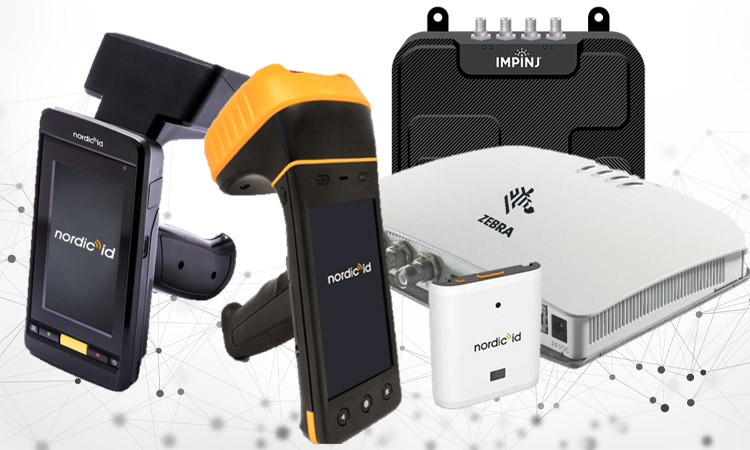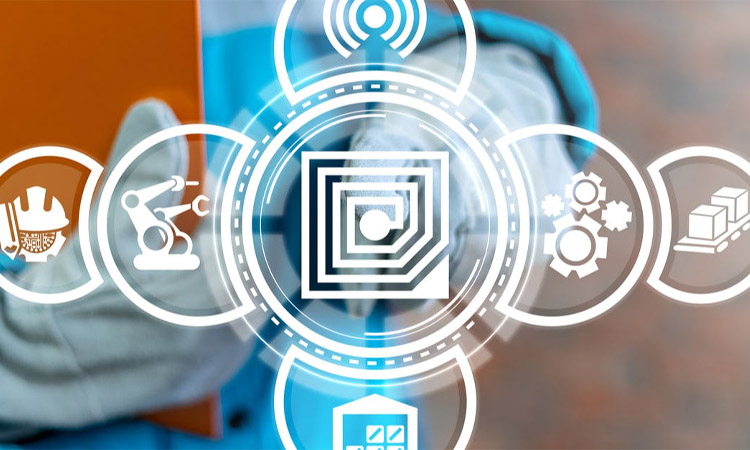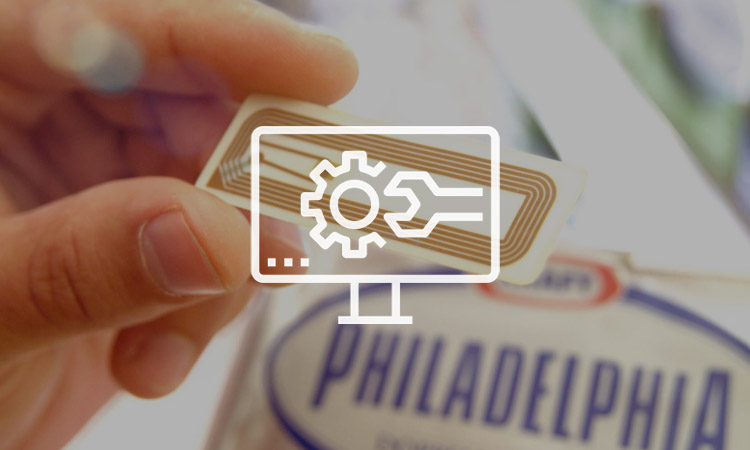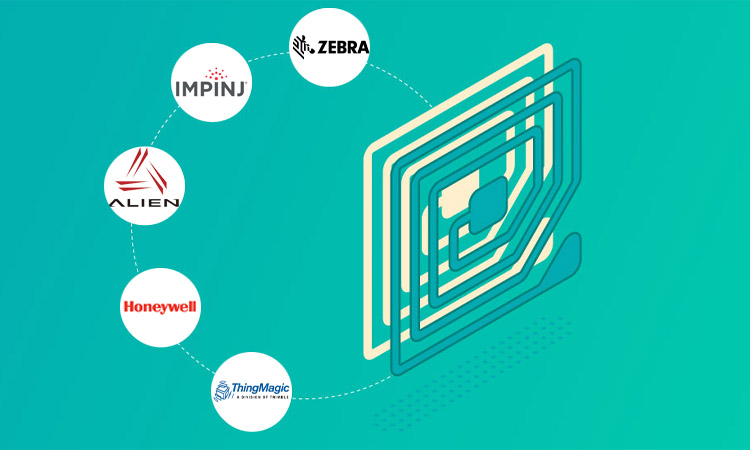When it comes to enhancing operational efficiency and improving inventory management, Radio Frequency Identification (RFID) technology holds immense potential for businesses. However, before embarking on the implementation journey, it is crucial to understand the factors influencing the cost of adopting RFID systems. This article delves into the key aspects that impact the expenses of RFID implementation and provides valuable insights on strategies to optimize costs. By exploring the various factors and considering cost-effective approaches, organizations can make informed decisions and achieve a successful RFID implementation while maximizing their return on investment.
Hardware and Infrastructure Costs
RFID tags are an integral part of the system, storing and transmitting data wirelessly. The cost of RFID tags can vary based on factors such as their type (passive or active), read range, and durability. Passive RFID tags are generally more affordable, while active tags with longer read ranges can be more expensive but offer enhanced functionality.
RFID Readers and Antennas
RFID readers and antennas are responsible for capturing and interpreting the data transmitted by RFID tags. The cost of RFID readers depends on their capabilities, such as read range, processing power, and connectivity options. Antennas facilitate communication between tags and readers and contribute to the overall infrastructure cost.
How Expensive are RFID Readers?
The cost of RFID readers can vary depending on the type, features, and manufacturer. Basic RFID readers can cost around $100 to $200. And more advanced models with additional features can cost several thousand dollars. It is recommended to research and compare different options to find the best fit for your specific needs and budget.

There are several RFID readers, including handheld, fixed, and mobile.
- Handheld readers are portable and can scan RFID tags on objects or individuals.
- Fixed readers are installed in a specific location and can be used to track the movement of RFID-tagged objects within a certain range.
- Mobile readers are mounted on vehicles or other mobile platforms and can be used to scan RFID tags on objects or individuals as they move.
There are also specialized RFID readers for specific applications. Such as RFID readers for animal tracking or RFID readers for access control.
Software and Integration Costs
Software and integration costs play a vital role in the overall expense of RFID implementation. This section explores the impact of software and integration on the cost of implementing RFID technology, from RFID software that manages and processes data to seamless integration with existing business systems.
RFID Software
RFID software plays a crucial role in managing and processing the data collected by RFID systems. The cost of RFID software can vary based on factors like scalability, customization, and integration capabilities with existing business systems. Some software solutions may require additional licensing fees or ongoing support costs, which should be considered during the implementation planning phase.
How Much does It Cost to Install RFID Software?
The cost of RFID software can vary depending on the type of software, the features and capabilities it offers, and the vendor. RFID software can range from a few hundred dollars for basic software to several thousand dollars for more advanced solutions. It is recommended to research and compare different options to find the best fit for your specific needs and budget. In some cases, the cost of RFID software may be included as part of the overall cost of implementing an RFID system.

Some of the large RFID software companies in the market include Impinj, Zebra Technologies, Alien Technology, Honeywell, and ThingMagic. These companies offer a range of RFID software solutions for various applications, including inventory management, asset tracking, and access control. It is recommended to research and compare different options to find the best fit for your specific needs and budget.
Integration with Existing Systems
Integrating RFID systems with existing enterprise resource planning (ERP) or warehouse management systems (WMS) may require additional customization or middleware development. These integration efforts can impact the overall cost of RFID implementation. Compatibility, data synchronization, and workflow alignment should be carefully evaluated to ensure a seamless integration process.
Deployment and Maintenance Costs
Deployment Expenses
Deploying an RFID system involves activities like site surveying, installation, and configuration. These deployment expenses include labor costs, equipment setup, and any necessary infrastructure modifications. Factors such as the complexity of the environment, the number of locations, and the scale of the deployment can influence the overall costs.
Maintenance and Support
Regular maintenance, technical support, and software updates are essential to ensure the smooth operation of RFID systems. Organizations should consider the ongoing costs of maintaining and supporting the hardware and software components. Establishing service level agreements (SLAs) and exploring maintenance options provided by RFID vendors to minimize unexpected expenses is important.
Cost Optimization Strategies
Conduct a Cost-Benefit Analysis
One of the critical steps in RFID implementation is conducting a comprehensive cost-benefit analysis. This analysis allows organizations to evaluate the financial implications and potential returns of adopting RFID technology. By carefully assessing the projected costs and comparing them against the expected benefits, businesses can make informed decisions about investing in RFID.
During the cost-benefit analysis, organizations consider various factors. They assess the potential benefits, such as improved operational efficiency, enhanced inventory accuracy, reduced errors, and streamlined processes. These benefits can lead to significant cost savings in areas like labor, inventory carrying costs, and supply chain management.
On the cost side, organizations evaluate the expenses associated with hardware, software, infrastructure setup, deployment, training, maintenance, and ongoing support. Additionally, organizations must consider any potential disruptions during the implementation phase and the associated costs.
A thorough cost-benefit analysis helps organizations determine the payback period for their RFID investment and estimate the return on investment (ROI). It provides insights into the financial feasibility and long-term value of adopting RFID technology. By weighing the costs against the benefits, organizations can make strategic decisions and prioritize RFID initiatives based on their financial impact.
Vendor Selection and Negotiation
Selecting the right RFID vendor is crucial for a successful implementation while managing costs effectively. The vendor selection process involves assessing multiple factors to ensure alignment with the organization’s requirements and goals.
When evaluating vendors, organizations consider factors such as pricing models, hardware quality, software features, and support services. It is essential to obtain detailed pricing information from vendors, including the cost of RFID tags, readers, software licenses, maintenance, and potential customization or integration charges. This information helps in comparing vendors and their offerings.
Negotiation plays a vital role in optimizing costs during RFID implementation. Organizations can discuss with vendors to obtain competitive pricing, favorable contract terms, and cost-effective maintenance and upgrade packages. By negotiating with vendors, businesses can achieve better pricing based on their projected volume, long-term commitments, or bundling of products and services.
Furthermore, organizations should evaluate potential RFID vendors’ reputations, track records, and customer references. Choosing a reliable and experienced vendor helps ensure a smooth implementation process, reduces risks, and receives ongoing support when needed.
Scalable and Modular Implementation
Opting for a scalable and modular approach to RFID implementation can offer significant cost advantages and flexibility. This approach involves starting with a pilot project or a phased implementation strategy. It allows organizations to validate the technology’s effectiveness and refine their implementation plan based on real-world scenarios and feedback.
By starting small, organizations can minimize upfront costs while gaining practical insights into the benefits and challenges of RFID. They can select a specific area or process where RFID can deliver quick wins and tangible results. As the pilot project proves successful, organizations can gradually expand the implementation to other areas or processes, scaling up based on the specific requirements and ROI.
A modular implementation approach enables organizations to allocate resources efficiently, manage risks effectively, and adjust the implementation strategy as needed. It also allows businesses to align the pace of implementation with their budgetary constraints and operational priorities.
How Long do I Need to Use It to Get a Return?
The time it takes to get a return on investment (ROI) with an RFID system can vary depending on the specific system and its benefits. You can generally realize the ROI from an RFID system through cost savings and increased revenue. For example, an RFID system can help reduce labor costs by automating tasks, and reducing errors and can help increase sales by improving the customer experience and inventory accuracy. You can calculate the ROI from an RFID system by dividing the benefits by the costs and expressing the result as a percentage/ratio. The time it takes to achieve the ROI can be estimated by dividing the costs by the benefits and expressing the result in months or years. It is recommended to conduct a detailed analysis to determine the potential ROI and the timeline for achieving it.
Which Company are Suitable for RFID Systems?
RFID systems suit many enterprises, including manufacturing, retail, logistics, healthcare, and security. RFID technology can improve efficiency, accuracy, and security in these industries. For example:

- You can use RFID systems in manufacturing to track and manage inventory and production processes,
- In retail, to improve customer experience and reduce shrinkage,
- In logistics to track and manage the movement of goods,
- In healthcare, to track and manage medical equipment and patient information,
- In security to control access to buildings and other secure areas.
You can also use RFID technology for personal applications, such as access control, payment, and identification. RFID tags can be embedded in devices such as smartphones, credit cards, and passports to enable contactless payment, building access, and user identification. Some people also use RFID tags to keep track of personal belongings, such as keys and luggage, by attaching an RFID tag to the item and scanning it with an RFID reader. However, using RFID technology for personal applications is less widespread than in businesses and other organizations.
Can I Install My RFID?
Installing an RFID system can vary depending on the specific system and the components involved. In general, the steps to install an RFID system may include the following:

- Plan and design the system: Determine the specific goals and requirements for the RFID system, such as the types of objects to be tracked, the locations and range of the system, and the data to be collected and analyzed.
- Choose and purchase the RFID components: Select the RFID tags, readers, and software suitable for the system and the specific application.
- Install the RFID readers and antennae: Follow the manufacturer’s instructions to mount the RFID readers and antennae in the appropriate locations.
- Connect the RFID system to the network: Use the appropriate cables and software to connect the RFID system to the network and other systems, such as databases and servers.
- Program and configure the RFID system: Use the RFID software to program and configure the system, such as setting the appropriate parameters for the RFID tags and readers and defining the data to be collected and analyzed.
- Test and fine-tune the RFID system: Test the system to ensure it is functioning properly and make any necessary adjustments to improve its performance.
- Train users and support staff: Provide training to users and support staff to ensure they understand how to use and maintain the RFID system.
It is possible to install your RFID system. However, consulting with an RFID expert or company is recommended to ensure that the system is properly designed, installed, and maintained. Installing an RFID system involves setting up the hardware, software, and network infrastructure and configuring and testing the system to ensure it is functioning properly. It also involves training staff on using the system and troubleshooting any issues.
Read More: 31 Top RFID Companies in World
How do I Install My RFID System?
To install an RFID system, you will need to follow these steps:
- Determine the type and number of RFID tags and readers you will need based on the size and complexity of your project.
- Install the RFID readers at strategic locations in your facility or supply chain, ensuring that they are positioned to maximize the range and accuracy of the RFID signals.
- Install the RFID software on a computer or server, configure it to connect to the RFID readers, and manage the data collected from the tags.
- Test the RFID system to ensure that it functions properly and that the RFID tags and readers communicate effectively.
- Train your staff on how to use the RFID system, including scanning tags and managing the data collected from the tags.
- Monitor the performance of the RFID system and troubleshoot any issues that may arise.
It is recommended to consult with an RFID expert or company for assistance with the design and installation of your RFID system.
Software and integration costs, conducting a cost-benefit analysis, vendor selection and negotiation, scalable and modular implementation, and training and change management are crucial factors that impact the cost of RFID implementation. Organizations can optimize their investment in RFID technology by carefully evaluating these aspects and adopting cost-effective strategies. A well-planned and executed RFID implementation enhances operational efficiency and accuracy and delivers long-term value and cost savings for businesses.
More Questions About Install Cost of RFID Systems
-
Q1: Are passive or active RFID tags more cost-effective?
A1: Generally, passive RFID tags are more cost-effective than active ones. Passive tags are simpler in design, require no internal power source, and are suitable for short-range applications. On the other hand, active tags offer extended read ranges and additional features but tend to be more expensive due to their built-in power source and advanced functionalities.
-
Q2: Can RFID systems be integrated with existing business systems?
A2: Yes, RFID systems can be integrated with existing business systems such as ERP or WMS. However, integration may require additional customization or middleware development, impacting the overall cost. Compatibility, data synchronization, and workflow alignment should be carefully evaluated to ensure seamless integration.
-
Q3: How can I optimize the ongoing maintenance costs of RFID systems?
A3: To optimize ongoing maintenance costs, establish service level agreements (SLAs) with RFID vendors that outline the scope of support and maintenance services. Explore vendor maintenance options, including cost-effective maintenance packages and software update plans. Regularly perform preventive maintenance to identify and address potential issues before they become costly problems.
-
Q4: How can I justify the cost of RFID implementation to stakeholders?
A4: Conducting a comprehensive cost-benefit analysis is crucial for justifying the cost of RFID implementation to stakeholders. Highlight the potential benefits, such as improved operational efficiency, inventory accuracy, and cost savings in areas like labor and error reduction. Present a detailed analysis that demonstrates how the long-term advantages outweigh the initial investment.
-
A5: How much does it cost to install RFID?
Q5: The cost of installing RFID technology varies depending on the scale and complexity of the project. The cost can range from a few hundred dollars for a small-scale installation to tens of thousands for a large-scale implementation. The cost typically includes the cost of RFID tags, readers, and software, as well as labor and installation costs.
-
A6: Is RFID cheaper than barcodes?
Q6: In general, RFID technology is more expensive than barcode technology. RFID tags and readers are typically more expensive than barcode scanners and labels. However, RFID technology can offer many benefits over barcodes, such as faster scanning, scanning many items at once, and scanning items through non-metallic materials. In some cases, RFID technology’s increased efficiency and productivity can offset the initial higher cost.








